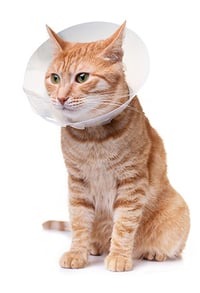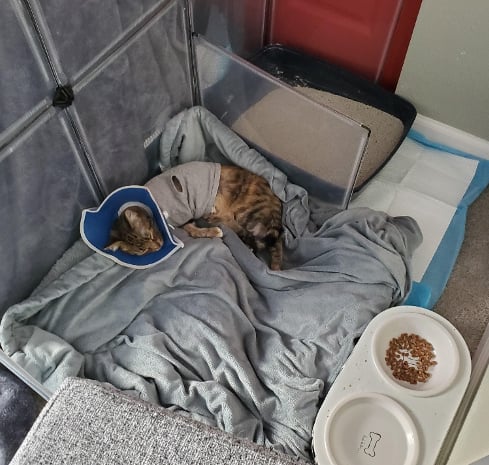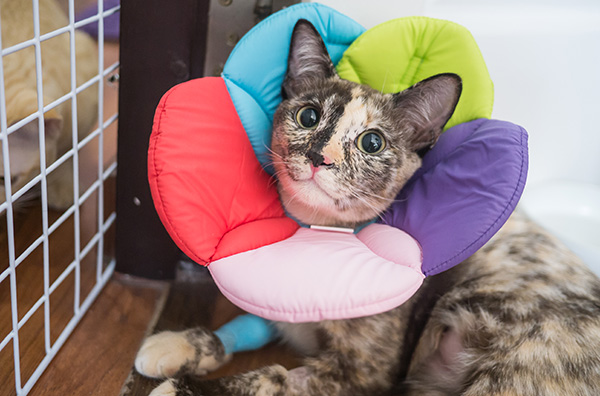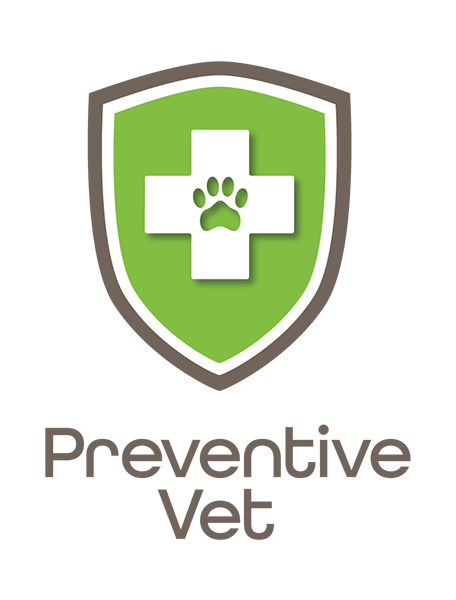- en
Your cat just had surgery — whether it was a spay, neuter, mass removal, or something less routine – your cat will need some extra TLC to recover quickly and without complications.
When your cat has a surgical procedure, it can be a stressful time for you, your cat, and your whole family! This pet information prescription has a few tips to help recovery go smoothly for everyone. Get well soon little one!
Quick Links

The dreaded cone! (Also commonly referred to as the "lampshade" or the "radar dish.") Your veterinarian might give you this super stylish E-collar to protect your cat's recent surgery site from licking, chewing, or scratching.
The cone gets its name from the "ruff," white collar worn in the Elizabethan Age.
Our mission is to help save dogs' and cats’ lives through our educational content. To support our efforts, this page may contain affiliate links. We earn a commission for qualifying purchases – at no cost to you.
Your veterinarian will provide you with specific instructions based on your pet’s surgery, medications, and home care. In general, however, it’s important to:

If you're reading this before your cat has surgery, you can check out these tips for desensitizing your cat to the E-collar. There are also some suggestions on style options and alternatives.

The best thing you can do is to keep your cat calm, follow any home care directions, and administer all medications as directed. Remember that cats hide pain and rarely, if ever, cry out. So, it’s always better to give their medications and home care as directed even though they may appear back to normal. Provide your cat with a clean, quiet spot for them to recuperate, away from other pets or small children. You may want to move their food and water bowls closer to their resting area, so they don’t have to get up and move as far to get to them.
Read more about what to expect after surgery and tips for caring for and confining your cat.
If you're having a tough time keeping your cat inactive, or they're wrestling with their E-collar, your veterinarian may need to prescribe medication to calm them down. Give them a call to discuss your options.
Your cat should be resting comfortably, eating and drinking well, and using the litter box. It’s not uncommon for your pet to be lethargic (low-energy), not eat or drink well, or have soft stool for the first 24–36 hours after surgery. However, their energy and appetite should be improving every day after their first day home.
Your cat’s incision should also be improving every day. While it is common to see some initial redness, swelling, and bruising at first, it should always be clean, dry, and without any yellow or green discharge. Any swelling and discoloration should start to improve within the first 3–5 days and resolve within 10–14 days.
You should call your veterinarian right away if your cat has:

One of the most common reasons a cat has to go back to surgery after discharge is because they were allowed to lick or chew at the incision or were too active while they were healing. While an E-collar can be annoying for you and your cat, it’s preventing a much bigger problem and will be worth the effort to leave it on until your cat’s incision is fully healed. Follow your veterinarian’s recommendation on returning to physical activity, depending on their procedure, it could be a few days to a few weeks. Sticking to the timeline your veterinarian provided will ensure the quickest return to normal for your cat.
The Pet InfoRx® is made possible, in part, through our partnership with AlignCare®.


© Preventive Vet. All rights reserved. PreventiveVet.com
